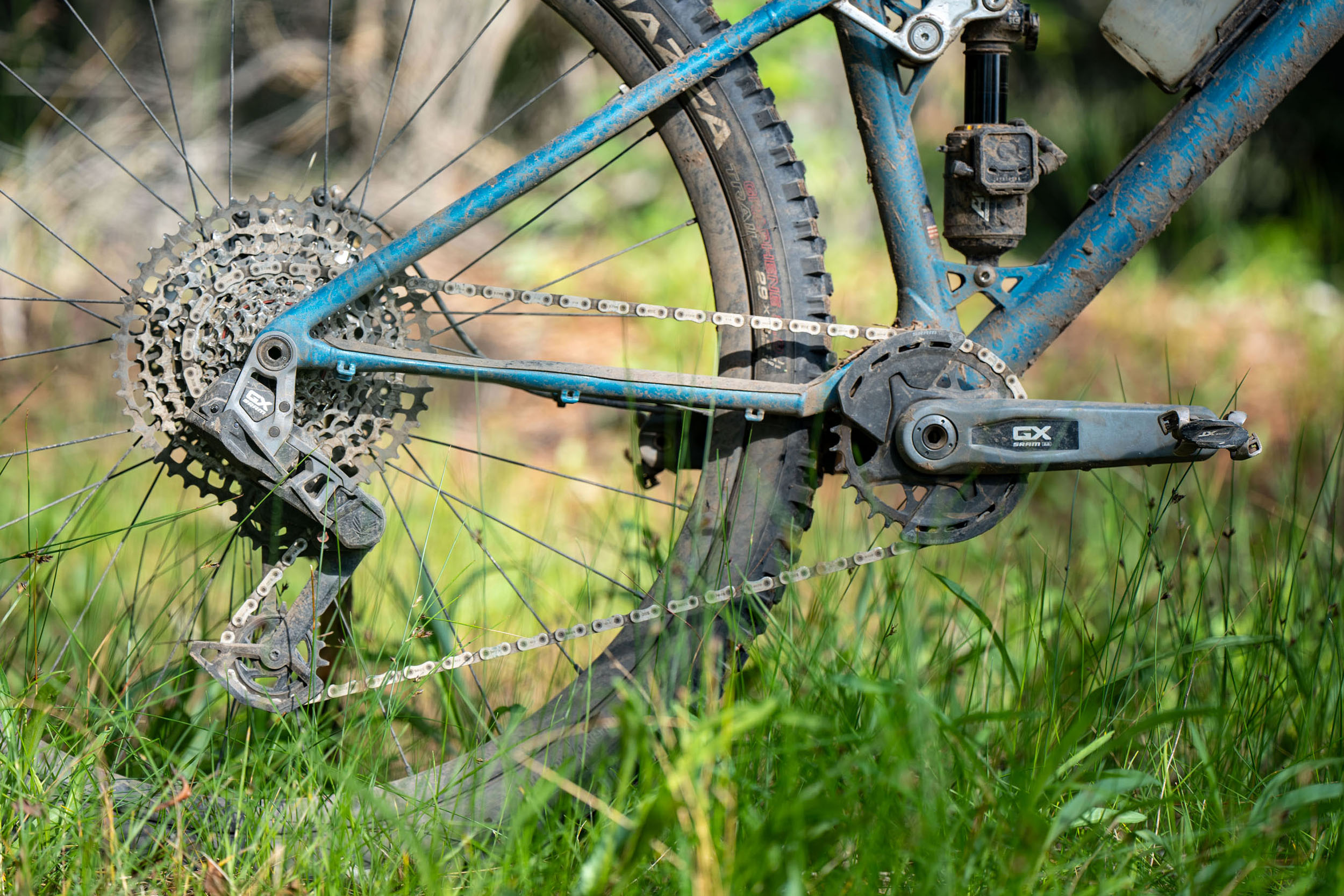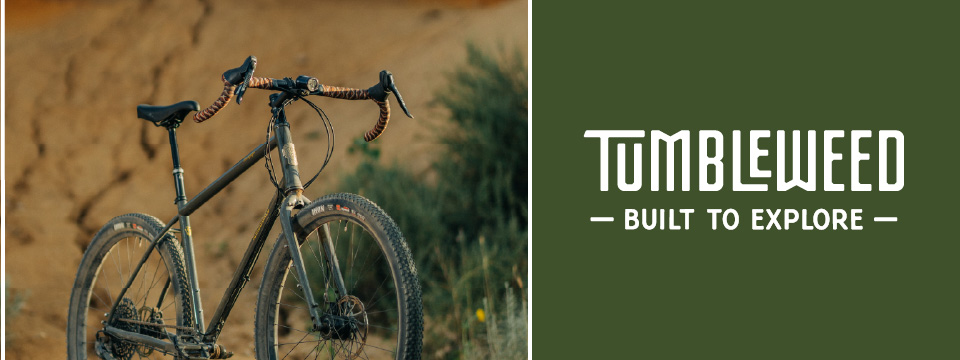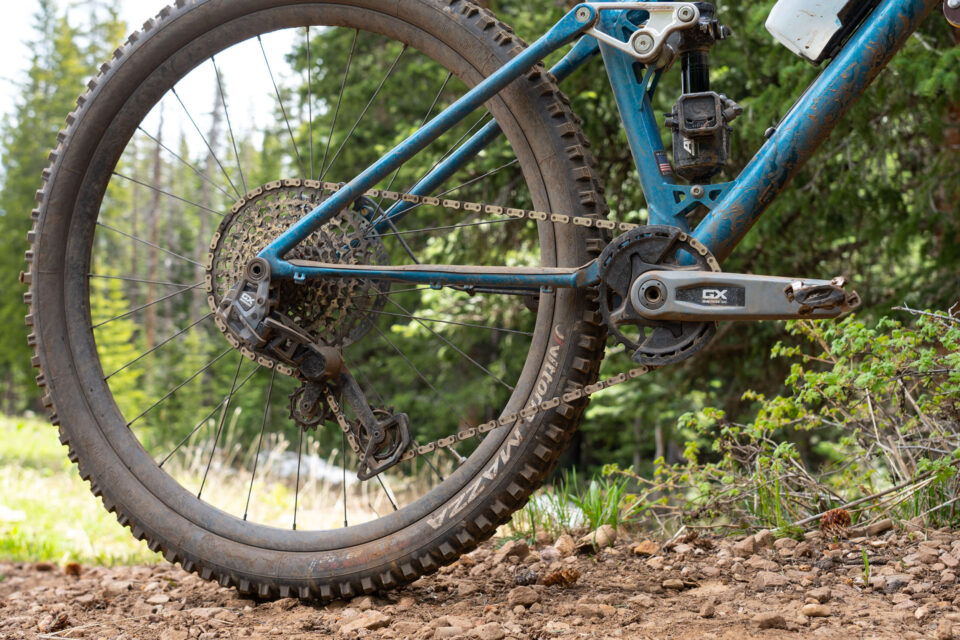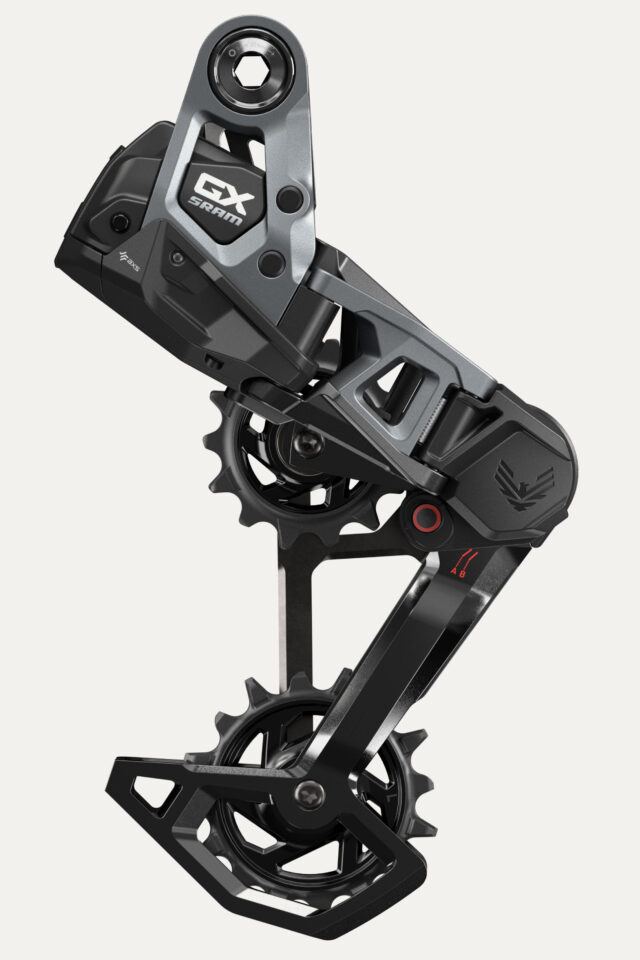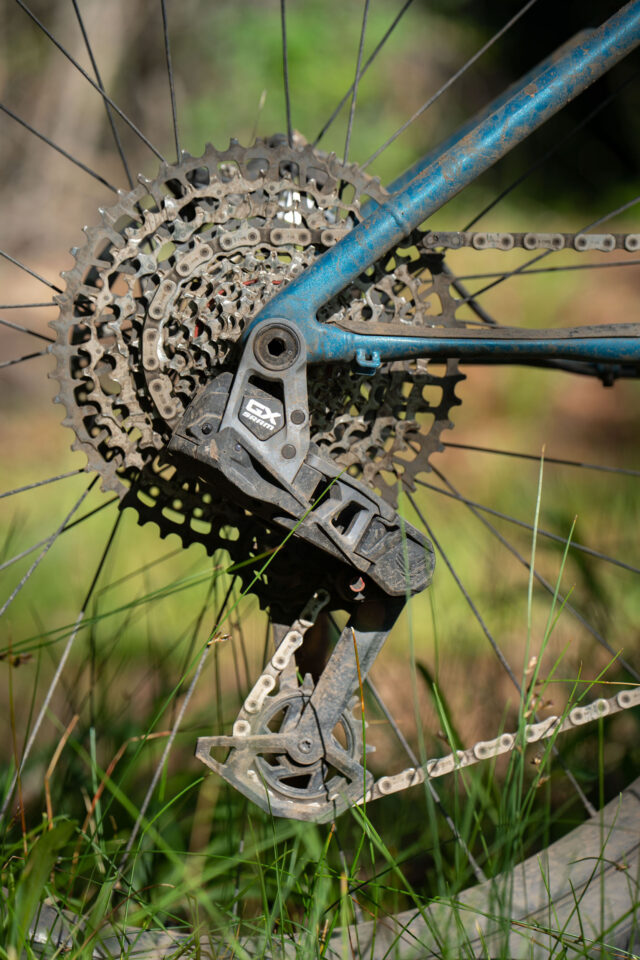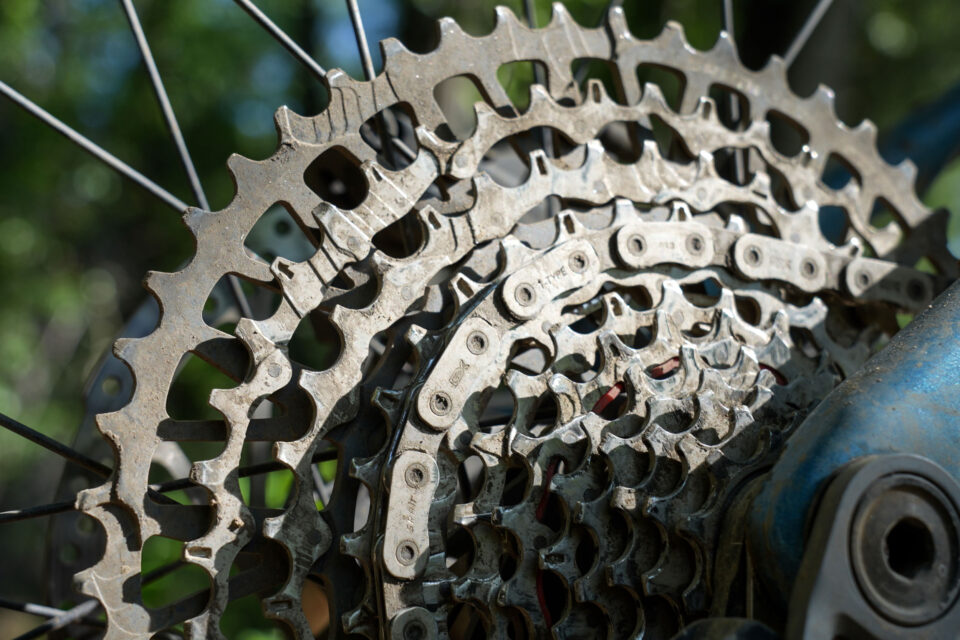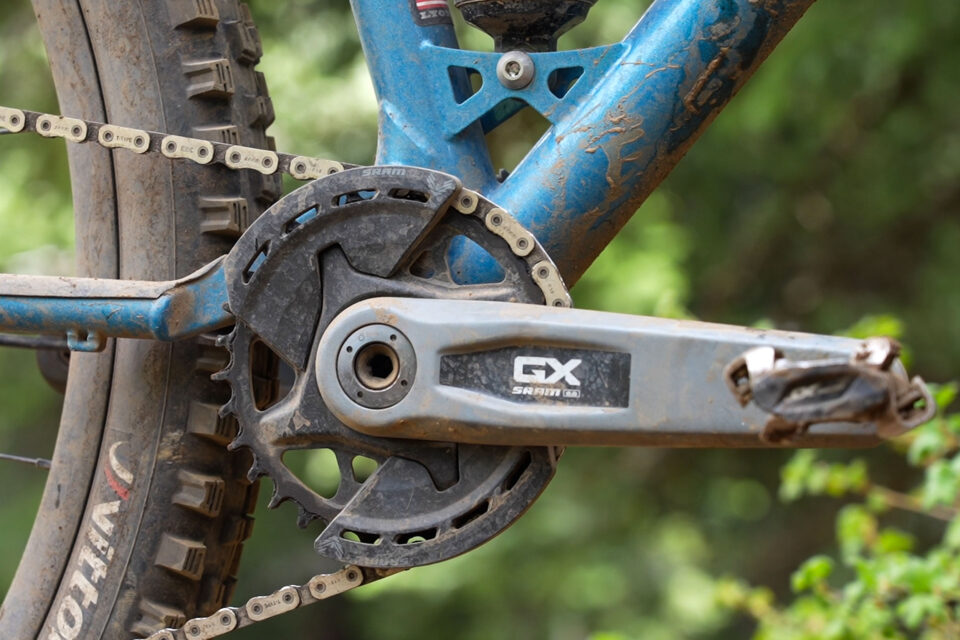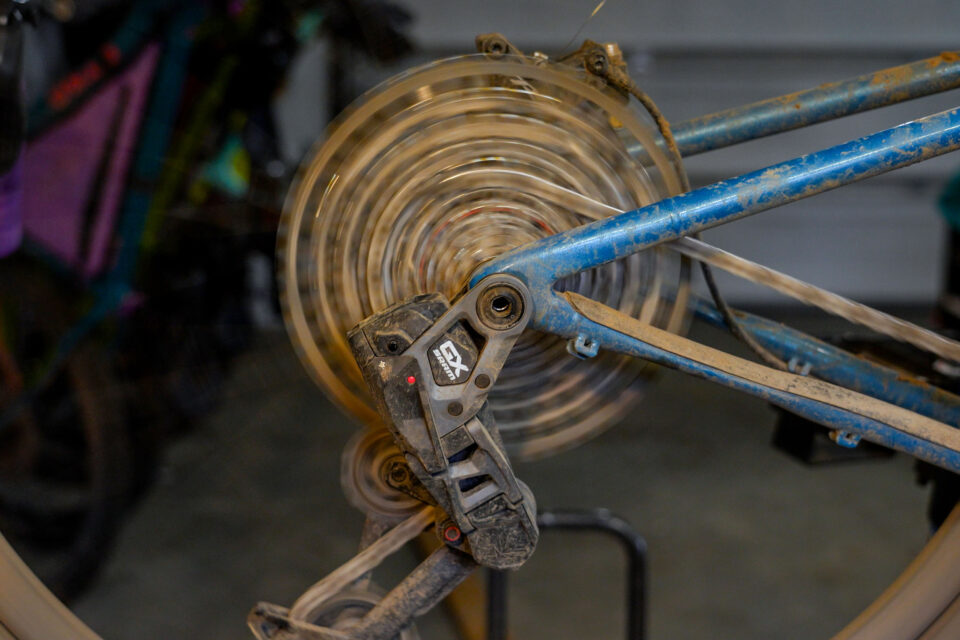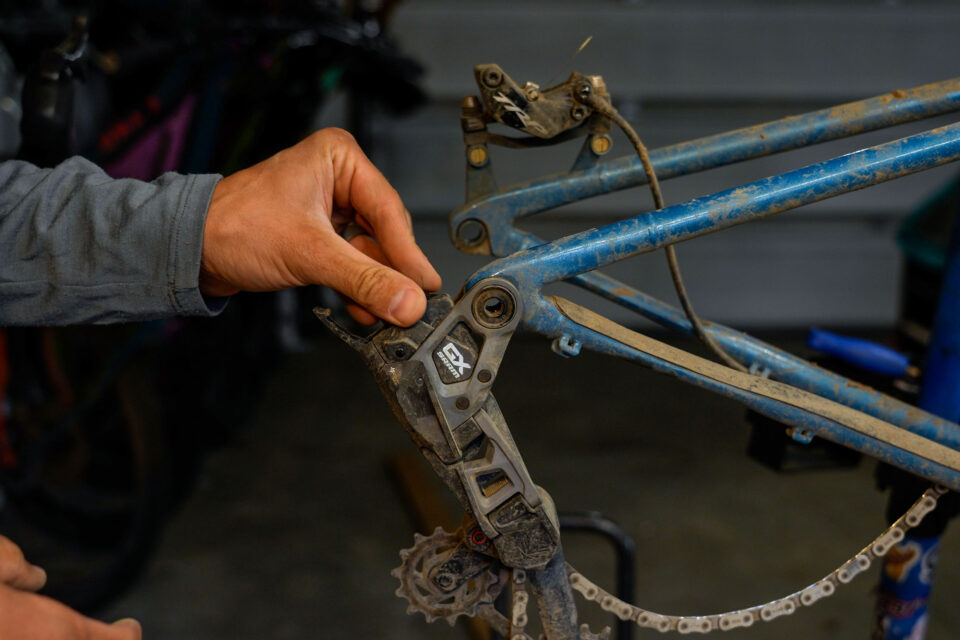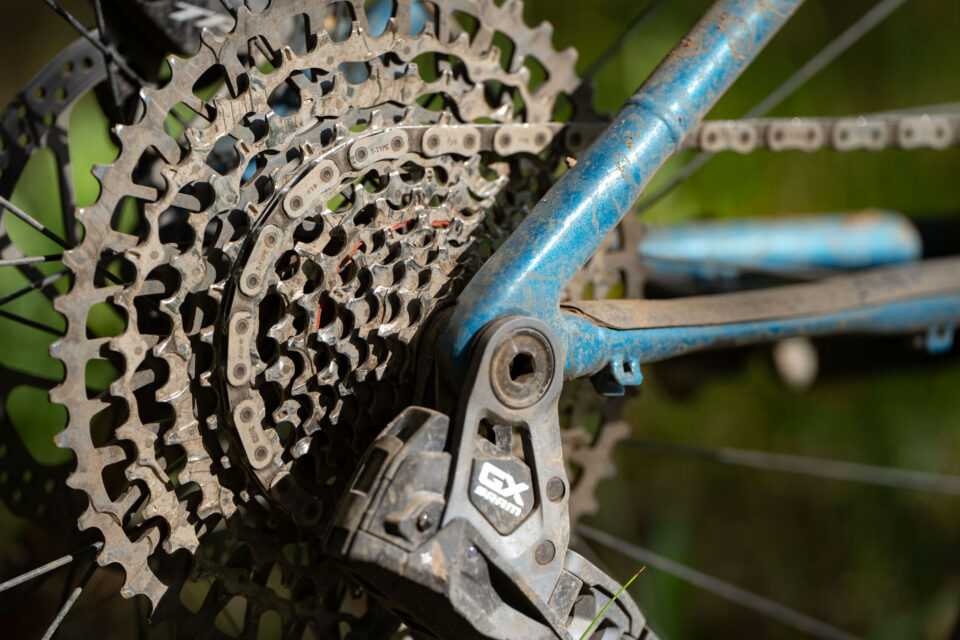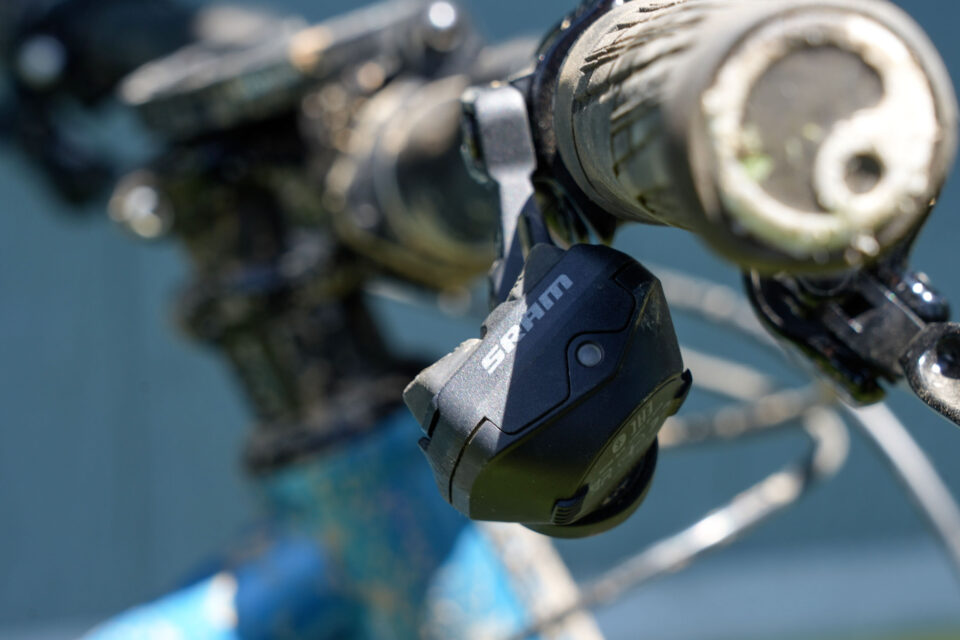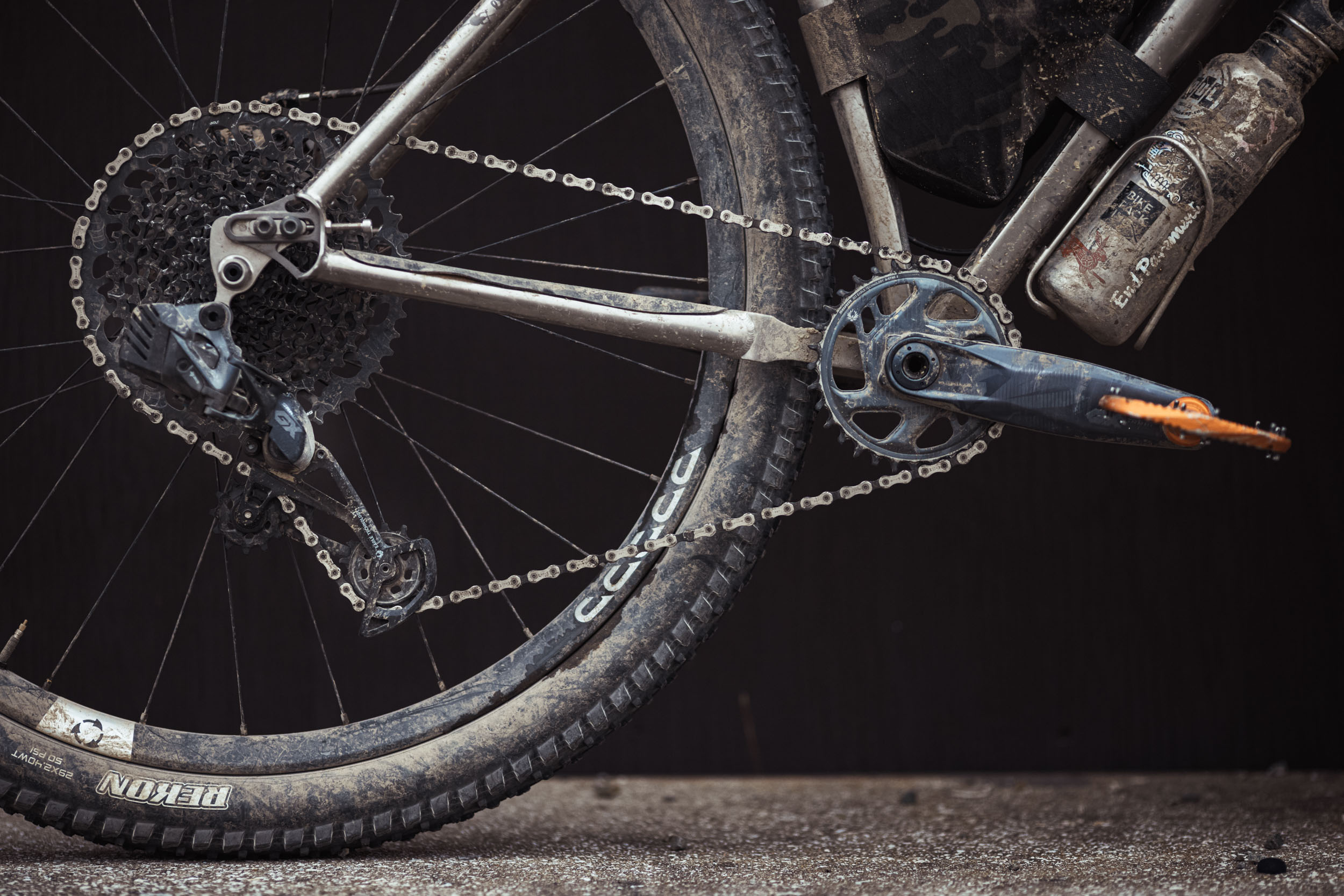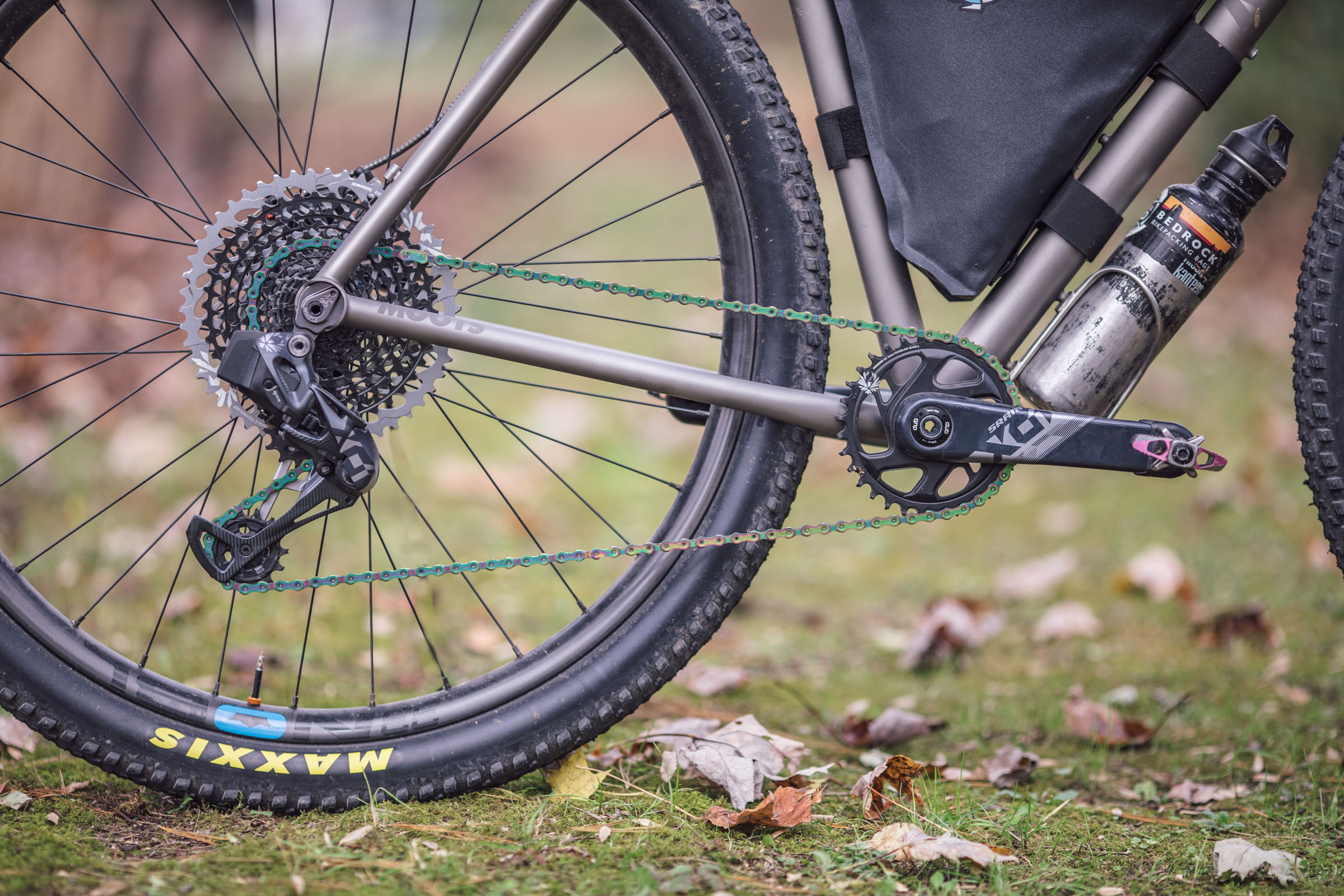SRAM GX Eagle Transmission Review: Trickle-Down Tech
Share This
Early this year, SRAM Introduced the Eagle Transmission, their hanger-less drivetrain built around the Universal Derailleur Hanger dropout standard. As with most of SRAM’s drivetrains, a trickle-down group was inevitable, and it has arrived today. Find the prices, weights, and our full review of the SRAM Eagle GX Transmission here…
Announced back in March, the Eagle XO Transmission had a slick design and has gotten a great deal of press since its release. Many folks liked the tech but not the price tag. Fortunately, SRAM didn’t wait too long to announce trickle-down SRAM Eagle GX Transmission components. Read on to find the full review of this new group, watch the video, and find tables outlining weights and prices.
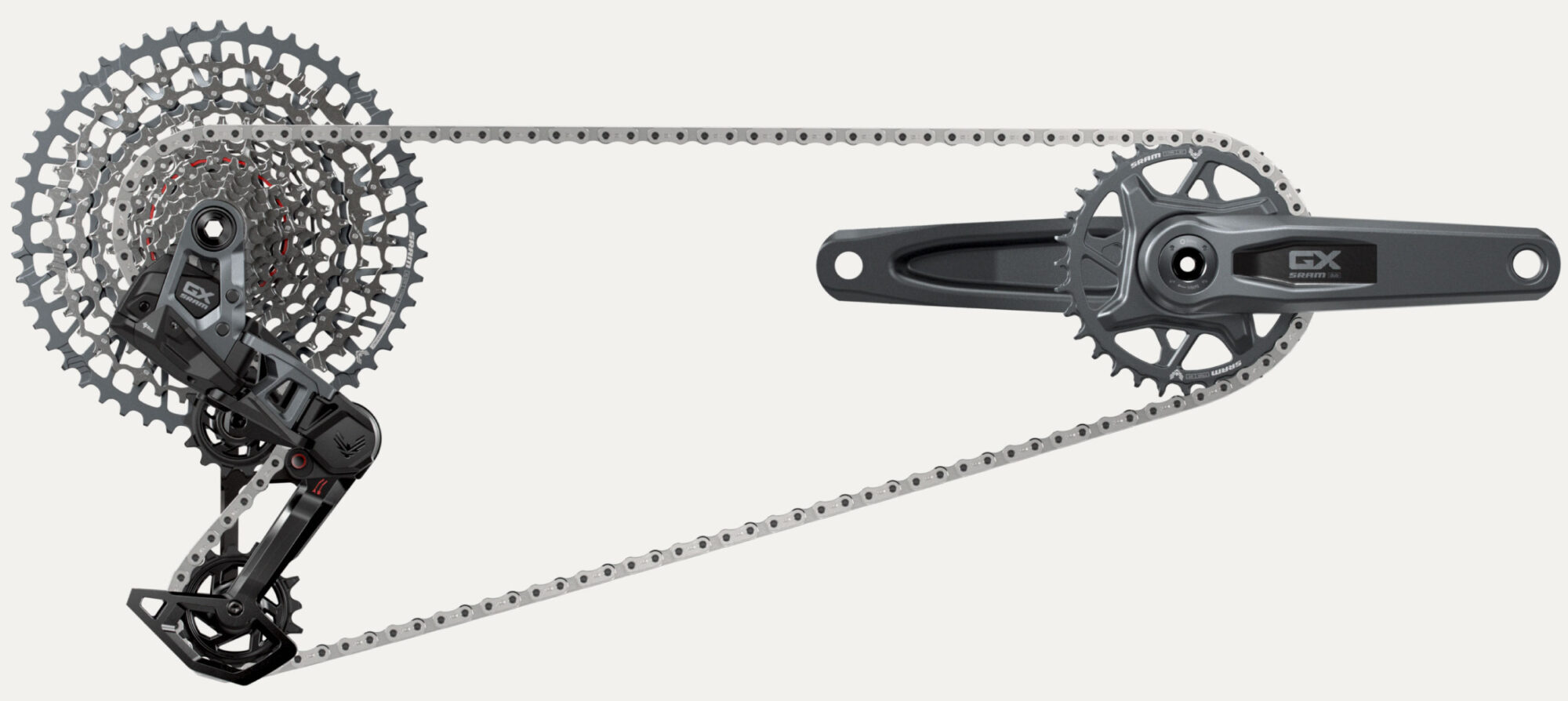
I’ll be the first to admit that I get hyped up over new technology. New tech releases can sometimes come off as a bit silly, like an annual iPhone release, but when SRAM launched Eagle Transmission by using their UDH standard and eliminating the need for a derailleur hanger, they had my attention. To recap, SRAM launched their XX SL, XX, and XO Eagle Transmission systems in March, which we reviewed here. It’s a hangerless interface with a derailleur that mounts directly to the rear wheel axle, and it has a unique install process that doesn’t have adjustment screws and essentially replaces the tuning points on the derailleur itself. SRAM claims that by removing the derailleur hanger, the cassette and derailleur work better together, creating more precise shifting. Long story short, I have to agree, which I’ll dig into in the video review below.
Specs and Differences
Let’s start by diving into some differences in weights. SRAM changed things up when they added XX SL to the mix, slightly complicating their lineup, but its clear that the GX group remains an affordable no-frills group. Even so, it shares many similarities with the XO Eagle Transmission. The shifting pod is the same and comes in at 70 grams with the matchmaker clamp.
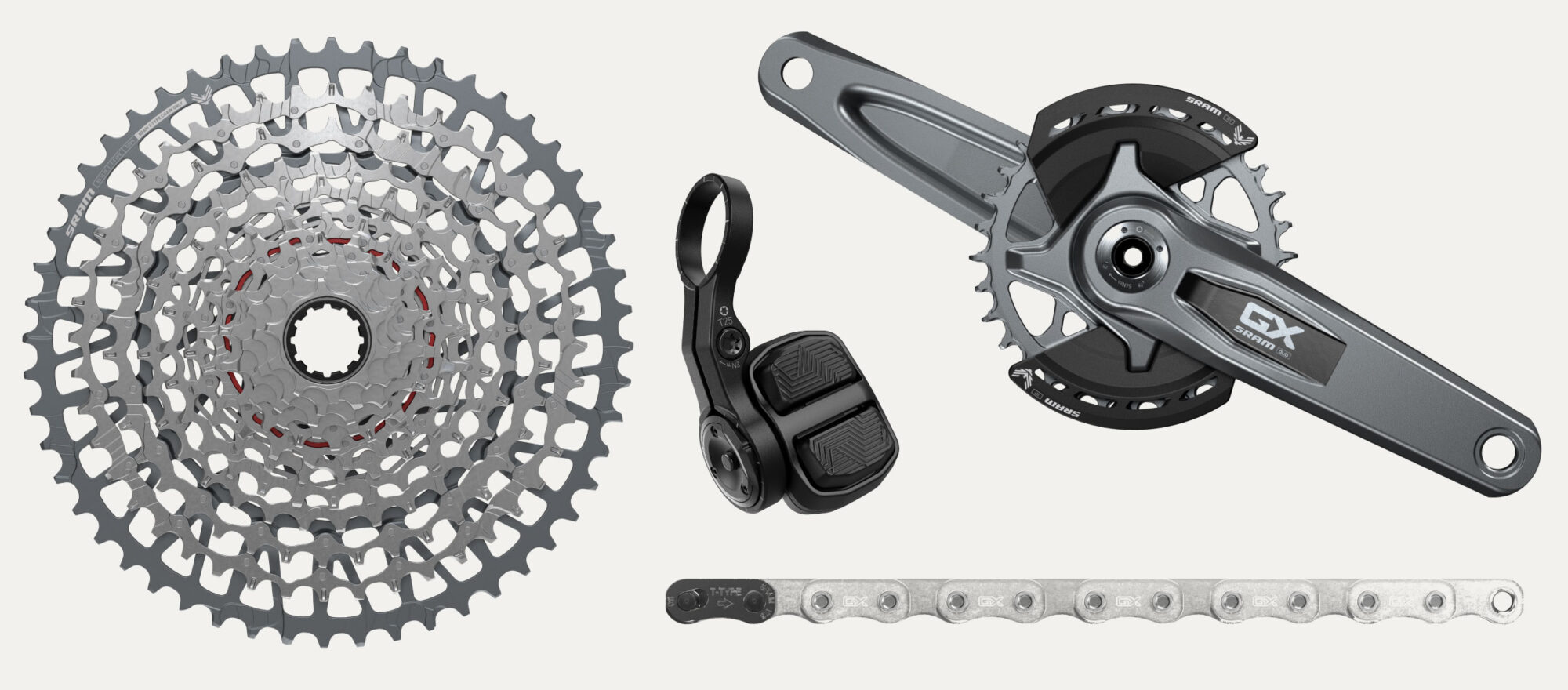
The new GX cranks are also aluminum but don’t come with the fancy cutout that the XO aluminum version has. As a result, it weighs 111 grams more, coming in at 734 grams. Like the X0 cranks, the GX cranks have two removable composite bash guards, which add a bit of extra weight. It should also be noted that all Transmission cranks have a wider spindle designed for a 55mm chainline and use the new 8-bolt direct mount T-type chainring. This requires different DUB bottom bracket spacers compared to the previous GX Eagle AXS. It uses a 3mm spacer on the non-drive side and a 7.5mm spacer on the drive side. This was the most confusing part of the installation process for me, as the kit did not come with a bottom bracket or spacers. I tested 170mm cranks, and they are available in 165 and 175mm options too.
| Group | XXSL | XX | X0 | GX |
|---|---|---|---|---|
| Derailleur | 440 g | 465 g | 470 g | 489 g |
| Cassette | 345 g | 380 g | 381 g | 446 g |
| Crankset | TBD | TBD | 623 g | 734 g |
| Shifter Pod | 70 g | 70 g | 70 g | 70 g |
| Chain | 240 g | 247 g | 262 g | 284 g |
| Totals | 1596 g | 1763 g | 1784 g | 2023 g |
The derailleur is also similar to the other three Eagle Transmission offerings with one substantial difference. The battery location is placed higher, as if it was rotated clockwise by 90 degrees. This tucks it into the middle of the derailleur body, which SRAM claims better protects it from impact and gives it a cleaner appearance. I’m not sure if this was a move to protect a patent, but it’s rather odd that the GX is different from the other three. Either way, I like the look of this particular derailleur as it’s more toned down than the XO version. Better yet, it’s only 19 grams heavier, weighing in at 489 grams compared to its 470-gram XO sibling.
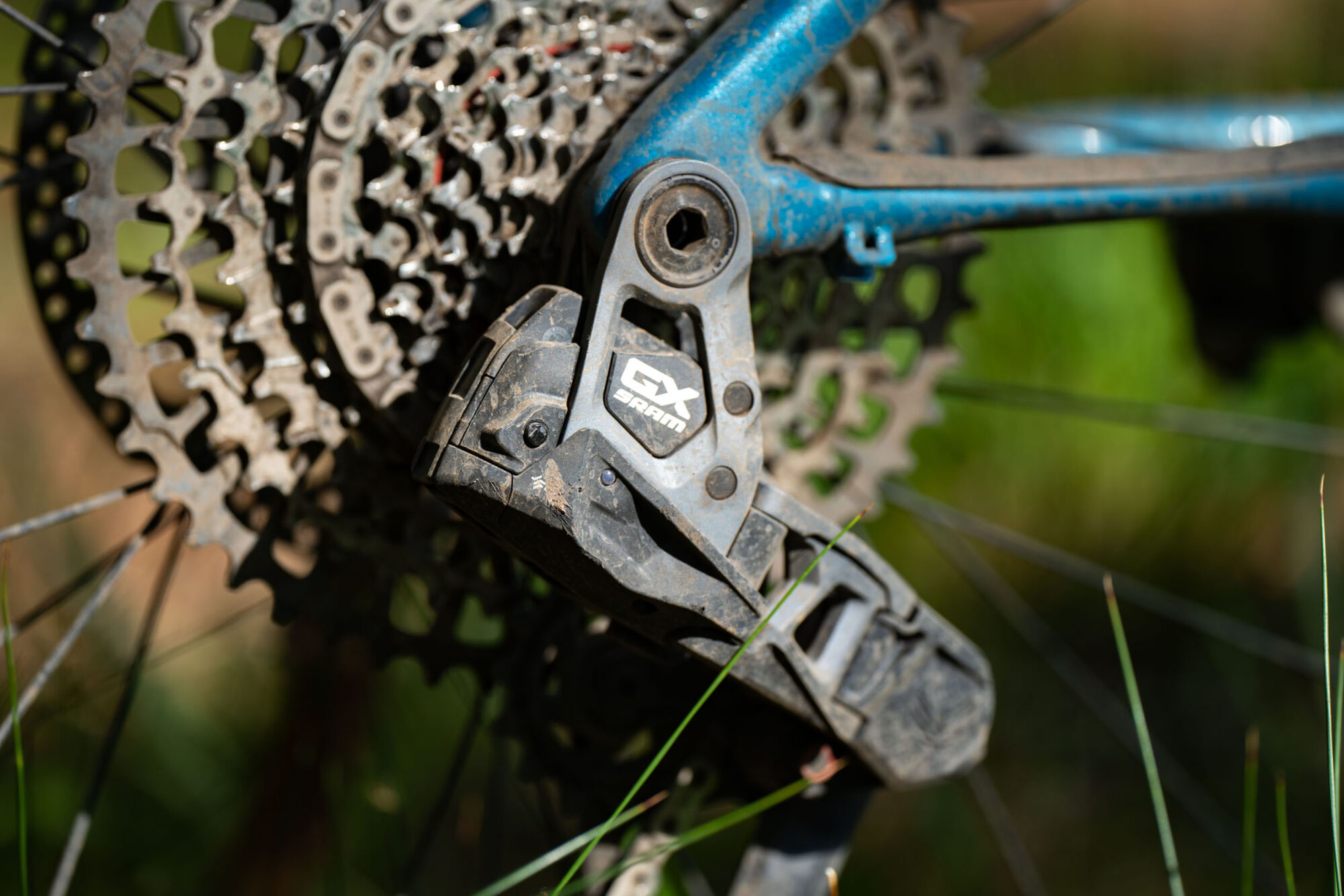
The one-piece Aluminum and steel GX cassette still has a 520% range and comes with the updated Eagle Transmission cassette mapping, which is what allows it to shift under load and time shifts for better accuracy. It has their “Pindome” design for cogs 1-8 and a Mini Cluster for gears 9-12. I forgot to weigh the new cassette when it was new, but it comes in at 446 grams with a bit of dirt on it, roughly 65 grams more than the XO cassette and 101 grams heavier than their lightest XX SL Cassette. The new GX Cassette comes in lighter than the previous GX Eagle cassette.
All of this is linked together using SRAM’s T-type chain, a specific chain made for the Transmission drivetrain system. The chain and cassette both come with a nickel-plated finish, which they claim delivers better durability with a quieter shift experience. At 284 grams, the 124-link GX Chain comes in 22 grams heavier than the XO version.
Install
As I mentioned in my first-ride video, Transmission installation setup is super easy. All you need to do is look up the proper settings for your bike on SRAM’s AXS site; this will help you determine the chain length, the setup cog you need to use, and the derailleur setup key, which helps with achieving proper chain gap. The installation is completely different from setting up a traditional derailleur and will undoubtedly be an adjustment, but after doing it once, it’s pretty straightforward. The instruction video is linked here to get a full look.
During my latest installation, I found that the tolerance on the Reeb SST axle dropout to be a bit tight, so I had to force the bushing into the dropout. Once it’s in, it shouldn’t move anyway, and it never caused me an issue. Overall, the installation was easy, but it is a departure from your typical drivetrain setup, so it might take a bit more head-scratching time initially.
Pricing
As shown in the table below, the SRAM GX Eagle Transmission will set you back approximately $1,050 when purchased as components, which is about $500 less than the XO version. They also sell the full group for 1,099, which includes a battery and charger—the derailleur doesn’t include a battery. It’s also worth adding that the GX transmission is only about $100 more than the non-Transmission GX AXS drivetrain.
| Group | XXSL | XX | X0 | GX |
|---|---|---|---|---|
| Derailleur | $650 | $650 | $550 | $400 |
| Cassette | $600 | $550 | $400 | $250 |
| Crankset | $660 | $600 | $360 | $200 |
| Shifter | $150 | $150 | $150 | $150 |
| Chain | $150 | $125 | $100 | $50 |
| Totals | $2210 | $2075 | $1560 | $1050 |
How does it work?
I used the XO version for a few weeks this spring, and I was able to test this GX Transmission over 170 miles in June. While this isn’t a long-term test, by any means, I feel like I have a good understanding of the system now, and I couldn’t feel any significant difference between the XO Eagle Transmission and the GX. I think this has a lot to do with the hanger-less interface and setup process, which I think makes this system shift so smoothly.
I was also impressed by how the drivetrain shifted in rough and chunky conditions and while out in the elements. It maintained consistent shifting performance through creeks and lots of puddles, only occasionally slipping or getting hung up on the cogs, but I never dropped a chain. It’s impressive that I’ve continued to have excellent luck with SRAM electronic shifting, even in such sloppy conditions.
Eagle Transmission was designed to shift under load, with their new cassette mapping essentially telling the chain when to move inboard or outboard. Because I ride so many bikes without this, it’s hard to get in a groove of not soft-pedaling while I shift. I do this all the time, and I need to remember that it’s okay to shift with as much power as my normal pedal-stroke. And when I do this, I am impressed with the sharpness; it’s less loud and offers less hesitation.
One eye-opening experience I’ve had since using the Pinion Gearbox is the not-so-equal jumps between gears on cassettes. The way teeth are numbered in cassette cogs (GX Transmission cassette, for example: 10-12-14-16-18-21-24-28-32-38-44-52) forces the gear ratio jump. Like when you go from a 10-tooth cog to the next. It has to be either an 11-tooth cog, which would only be a 10% jump, or a 12-tooth cog, which is a 20% ratio change. There is no such thing as an 11.5 tooth cog for a perfect 15% jump, which the gearbox can offer. In short, you’re limited to gear jumps on a cassette, and the jump can be pretty drastic. That said, SRAM managed to improve some of this with 44 and 38-tooth step-down cogs from the large 52-tooth cog. I found the new gearing to be useful when compared with the 42 and 36-tooth found on the previous Eagle cassettes. I wasn’t searching for an in-between gear on some steeper climbs.

Battery Life
SRAM mentioned that you would likely get shorter run times per battery with the new GX derailleur, but I didn’t find this to be true. Run times are similar to the older Eagle AXS System, which is counterintuitive, as it seems like the new Transmission derailleur is working harder as it waits for the timed shift mapping on the cassette. As long as it’s set up correctly, it’s not putting undo stress on the gearbox. There was a bit more room for error with limit and B-tension screws on SRAM Eagle AXS Derailleurs, and when those were off, it seemed like the system would work harder and reduce battery run times.
It’s worth mentioning that while you can make micro-adjustments on the derailleur inboard or outboard by using the controller or the app, I never needed to do so while testing this drivetrain. Overall, I got about 20 hours with one battery, riding mostly singletrack in Gunnison and Crested Butte, which was a mix of undulating desert terrain and mountain riding. I got a warning about a low battery the other day, and it lasted about four hours longer, which I’m happy to report.
While the XO and GX derailleurs don’t come with that neat magic pulley wheel, they are compatible if you upgrade to the XX SL pulley wheel kit. And that’s the case with many of these bits and parts on the derailleur. SRAM created removable and replaceable small parts to keep your derailleur going for the long run.
I never really got used to the shifter pod while testing the XO system, mainly because there were so many different ways you could adjust it. So, when I installed this GX group, I took some time to play with it. I ultimately positioned it similarly to a mechanical shifter, and it works great. I appreciate the separate buttons on this controller and the definitive button feeling when pressing. I did, however, have one instance where the lower button got stuck in and it wouldn’t shift. It was frustrating at the time, but it worked itself out after pressing it a few times. It hasn’t repeated the issue since.
- Model Tested: SRAM GX Eagle Transmission
- Actual Weight: 2,023 grams (4.5 lbs)
- Place of Manufacture: China
- Price: $1,050
- Manufacturer’s Details: SRAM
Pros
- $500 cheaper than X0 Transmission and offers virtually the same level of performance
- Easy to install and tune
- Reliable, crisp, accurate shifting offers a best-in-class performance
- The lack of a derailleur hanger offers insurance and peace of mind
- SRAM enables repairs and a longer lifespan with replaceable small parts
Cons
- Weight is a con overall with any Transmission system
- Expensive compared to mechanical drivetrains
- It’s a good idea to carry extra batteries, which is a downside because it’s an added expense
- The slight the delay in shifting with the new cassette mapping could be considered a con to some, although it’s easy to get used to
Wrap Up
After jumping from bike to bike, I found the Transmission offers a more consistent and reliable shifting experience than other drivetrains. It has a more straightforward install process and provides added assurance and confidence than a flimsier derailleur and hanger, especially on rough singletrack. Is it necessary? No, but it sure is nice. Overall, if you are keen on trying out Eagle Transmission, The GX version offers everything the XO transmission does at a much more approachable price point but with a little extra weight. The GX transmission will run you approximately $1,100 compared to $1,600 for the XO version, and $500 is a lot of money just for a bit of weight and the same shifting performance. Dollar for dollar, the GX Eagle Transmission is my pick, though both are still undoubtedly pricy upgrades that I wouldn’t suggest rushing out to purchase if they’re not in your budget.
Further Reading
Make sure to dig into these related articles for more info...
Please keep the conversation civil, constructive, and inclusive, or your comment will be removed.






